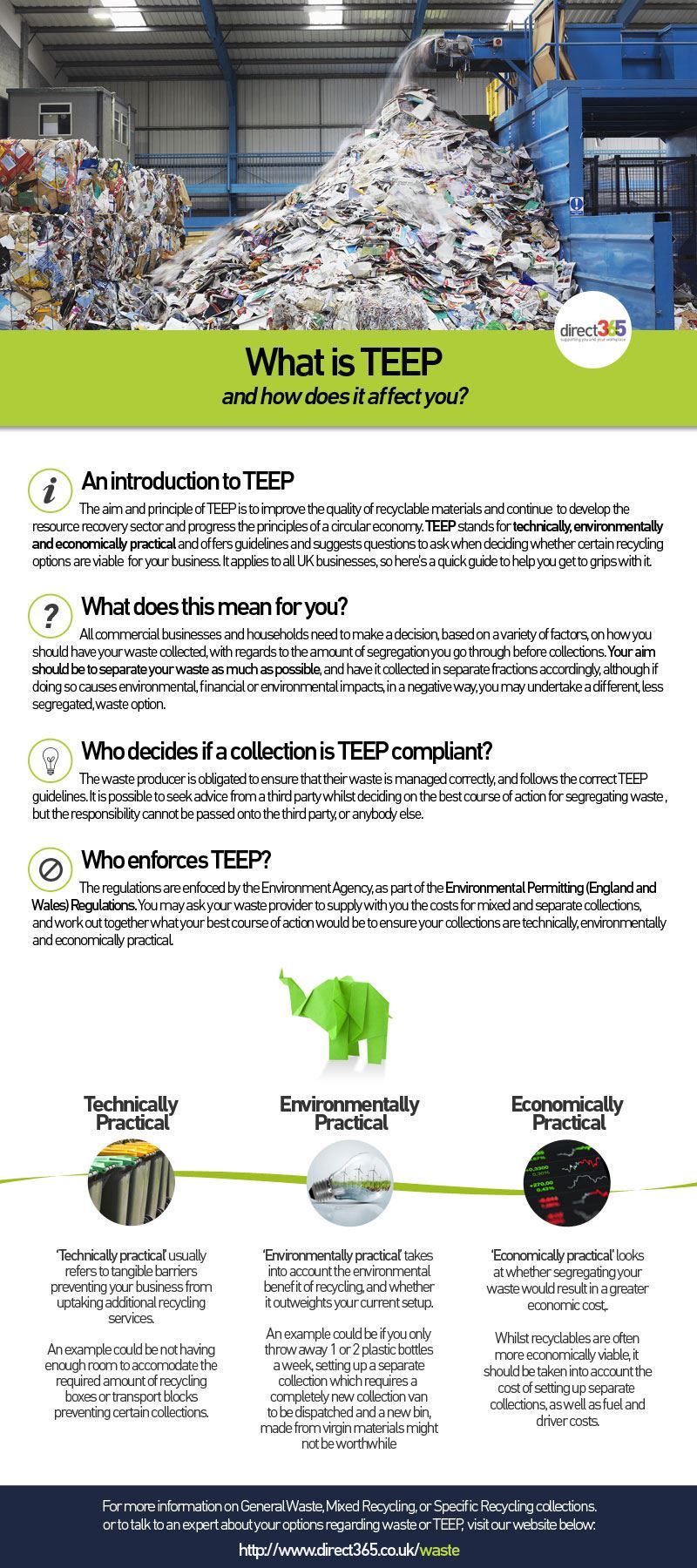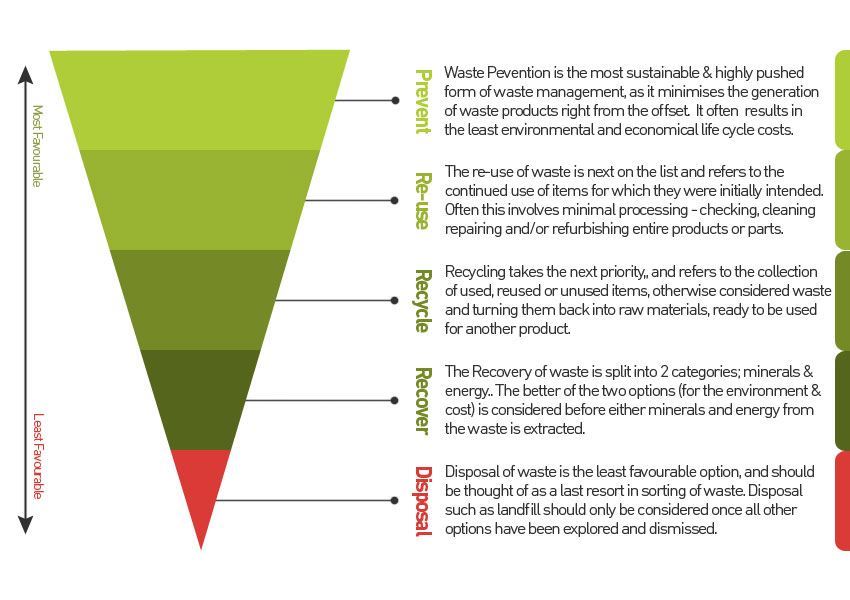New waste legislation came into effect on the 1st of January 2015, which governed the way all businesses in the UK should handle their waste, requiring them to uptake separate collections of their recyclables (paper, card, metals, glass and plastic) when it is ‘technically, environmentally and economically practical’, or, TEEP. We covered the details of the new 2015 waste legislation on our blog, but we felt it important to fully cover TEEP – what it is, and what it means for your business.
The aim, and principle, of TEEP, is to improve the quality of recyclable materials, as well as to continue to develop the resource recovery sector and progress the principles of a circular economy. It applies to all UK businesses, so here is a quick guide to help you get to grips with it.
A Guide to the 2015 Waste Regulations.
TEEP stands for technically, environmentally and economically practical and offers guidelines and questions to ask when deciding whether recycling is a viable option for your business..
TEEP explained
Is it Technically practical?
An example of technical practicality that may affect your waste collection could be not having enough room to accommodate the required amount of recycling boxes, for separate collections. In a time like this, it would be deemed better to provide a business with one Mixed recycling collection instead of various boxes, clogging up entrances or taking up space that simply isn’t available.
Is it Environmentally Practical?
The environmental aspect refers to whether it is environmentally beneficial to actually arrange a separate collection of your waste. For example, if you throw away 1 or 2 plastic bottles a week, that are not currently separated, would the expensive in virgin materials used to create a new recycling container, as well as the additional fuel requirements to undertake the collection worthwhile for the environmental benefit of recycling 1 or 2 plastic bottles? Sometimes it is more environmentally friendly to not enforce certain recycling regulations.
Is it Economically Practical?
Would segregating the waste result in a cost greater than a non-separated waste stream would? Whilst most recyclables are more economically viable, in a cost-per-tonne format over general waste streams, it should be balanced and taken into account the cost of more containers and increased fuel and wage costs for more frequent or separate collections.
The Waste Hierarchy
TEEP ties in well with the overarching Waste Hierarchy, which is a guide/template, on how you should aim to manage your waste, labelling the most favourable option all the way down to the least favoured option for waste management. It is constructed with sustainability at the forefront of its layout, with the most favourable being the greenest option and the least favourite being the most harmful to the environment.
It is a guideline for a ‘zero waste economy’. This doesn’t mean that no waste exists, but that resources are fully valued, financially and environmentally, and are reduced, reused and recycled as much as possible and thrown away only as a last resort.
The stages of the Waste Hierarchy:
From top to bottom, here are the different stages of the waste hierarchy:
Prevent
Waste prevention is the most desirable action on the waste hierarchy as it results in absolutely no waste whatsoever. The aim is to minimise the amount of waste products in the first place, so that resulting actions don’t need to take place. This method not only cuts down on the resulting amount of waste that requires disposal, but can also help to cut down the amount of products produced, therefore saving even more energy in the process.
Re-use
Re-use is the next most desirable option, and it calls for products or materials to be used again for their primary intended purpose. A lot of the time this requires collection, in order to check, cleaning, repair or refurbish the item, but can also be as simple as making sure you use a piece of paper on both sides before deciding to throw it out.
Recycle
Next up is recycling, which many businesses already undertake through either a personal or legal choice. It involves the collection of used items that would otherwise be considered waste and processing them into raw materials to them be remanufactured into usable products or materials. The difference between recycling and reuse is that recycling involved re-manufacturing the product, whereas re-use can be as little as a fix-up.
Recover
Recover can refer to two things – the recovery of materials or the recovery of energy from waste materials – the preferred option is usually decided by which is best for the environment and human health. The recovery of materials involves recycling, composting and other such activities. The recovery of energy, such as incineration or using biomass boilers, is a way of getting the most out of otherwise useless waste.
Disposal
The absolute last resort, after all the other options have been exhausted is to dispose of the waste. This involves dumping or incinerating the waste, without extracting any energy. Most of the time, disposal occurs in an incineration plant, or at a landfill, where waste is dumped and left to decompose, or not, over time.
If you’re unsure about your responsibilities as a business since the new waste regulations came into play in January of this year (2015), then see our guide to the new 2015 waste regulations and what it means to your business, here.




